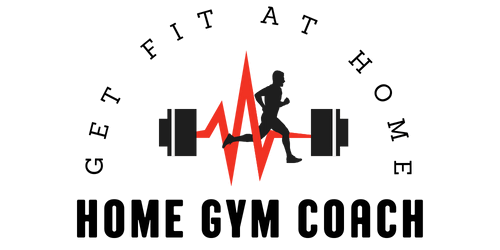Are you tired of feeling like you’re stuck in a fitness rut, not making any progress? It’s time to break free from those plateaus and overcome the stagnation with custom workout plans! Whether you’re a beginner or an experienced gym-goer, these personalized plans are designed to push you to new heights and help you achieve your fitness goals. No more cookie-cutter routines that leave you feeling uninspired – it’s time to take control of your fitness journey and see the results you’ve been dreaming of. Say goodbye to frustration and hello to a fresh, exciting approach to exercise. Let’s get started!
Understanding Plateaus and Stagnation
If you’ve ever embarked on a fitness journey, you’ve likely encountered plateaus and experienced the frustration of stagnation. Plateaus refer to a period of time when your progress seems to come to a halt, and you’re no longer seeing the desired results from your workouts. Stagnation, on the other hand, refers to a lack of progress or improvement in your fitness level.
Defining plateaus and stagnation
Plateaus can manifest in different ways depending on the individual. It may be a point where you’re no longer able to increase the weight you lift, or it could be a period of time when you’re not experiencing any improvements in your endurance or stamina. Stagnation, on the other hand, is a broader term that encompasses plateaus but also includes a lack of overall progress in your fitness journey.
Causes of plateaus and stagnation
Plateaus and stagnation can stem from a variety of factors. One common cause is a lack of variety in your workouts. When you consistently do the same exercises and routines, your body becomes accustomed to the demands, leading to diminished results. Another factor can be improper form or technique, which can limit your progress and put you at risk of injury. Inadequate recovery and rest periods can also contribute to plateaus and stagnation, as your body needs time to repair and build muscle. Additionally, mental and emotional factors such as burnout or lack of motivation can contribute to a stagnant phase in your fitness journey.
The Importance of Custom Workout Plans
While generic workout plans may seem convenient, they often fail to produce the desired results. Each person is unique, with different goals, abilities, and limitations. A custom workout plan takes into account your specific needs and helps you target the areas that require attention.
Why generic workout plans may not be effective
Generic workout plans are designed to cater to a wide range of individuals, making them too general to address individual needs. They may not consider your specific fitness level, preferences, or limitations. Without customization, you may find yourself performing exercises that don’t align with your goals or aren’t suitable for your body type. This can lead to frustration and lack of progress.
Benefits of custom workout plans
Custom workout plans offer numerous benefits that can help you break through plateaus and overcome stagnation. By tailoring your workouts to your specific goals, you can ensure that every exercise and routine is working towards your desired results. Additionally, a custom plan takes into account your fitness level and progress, allowing for gradual and sustainable improvements. This personalized approach also enables you to address any limitations or injuries you may have, ensuring that you’re engaging in safe and effective workouts.

Elements of an Effective Custom Workout Plan
To design an effective custom workout plan, there are several key elements to consider. By incorporating these elements, you can maximize your progress and break through plateaus.
Setting specific and realistic goals
To make your custom workout plan effective, it’s essential to define specific and realistic goals. Setting clear objectives helps keep you motivated and focused. Whether you aim to increase strength, improve endurance, or lose weight, having a target in mind allows you to design a plan that aligns with your aspirations.
Individualized assessment and evaluation
An effective custom workout plan begins with an individualized assessment of your current fitness level and abilities. This evaluation helps identify areas of improvement, strengths, and weaknesses. By understanding your starting point, you can design a plan that addresses your unique needs and allows for appropriate progression over time.
Adapting exercises and routines
Customization involves adapting exercises and routines based on your abilities and goals. For example, if you want to build strength, incorporating weightlifting exercises into your routine may be necessary. Alternatively, if you’re focusing on flexibility, implementing yoga or Pilates movements may be beneficial. By tailoring the exercises and routines to your specific goals, you can optimize your progress.
Monitoring progress and making adjustments
An effective custom workout plan doesn’t stop at its initial creation. It’s essential to regularly monitor your progress and make necessary adjustments along the way. Tracking your performance allows you to evaluate whether you’re on track to meet your goals. If you encounter a plateau or stagnation, you can modify your plan to break through the barrier and continue progressing.
Breaking Plateaus with Custom Workout Plans
When you find yourself in a plateau phase, feeling frustrated and stagnant, a custom workout plan can be the key to overcoming these challenges and pushing forward in your fitness journey.
Identifying the plateau phase
The first step in breaking a plateau is recognizing that you’re in one. Plateaus are often marked by a lack of progress or noticeable improvements despite consistent effort. By acknowledging this phase, you can shift your approach and implement strategies to ignite progress once again.
Introducing new exercises and variations
One effective way to overcome a plateau is to introduce new exercises and variations into your routine. Your body adapts to the demands placed upon it, so by incorporating new movements and challenging your muscles in different ways, you can spark growth and progress. This can be as simple as incorporating different exercises for specific muscle groups or trying new workout styles altogether.
Increasing intensity and volume
Plateaus can be broken by gradually increasing the intensity and volume of your workouts. By challenging yourself to lift heavier weights, increase the number of repetitions, or extend the duration of your workouts, you can push past your current limits and stimulate growth. However, it’s important to do this gradually and ensure proper form and technique to avoid injury.
Incorporating periodization and cycling
Periodization involves dividing your training into different phases, each with a specific focus and intensity level. By incorporating periodization into your custom workout plan, you can prevent plateaus and keep your progress consistent. Cycling between different types of workouts, such as strength-focused phases and endurance-focused phases, ensures that your body continues to adapt and improve.
Changing workout frequency and duration
Another way to break through plateaus is by adjusting your workout frequency and duration. Sometimes, taking a brief break or reducing the frequency of your workouts can give your body the time it needs to recover and adapt. On the other hand, increasing the frequency or duration of your workouts can provide the extra stimulus needed to push through a stagnant phase. Experimenting with different frequencies and durations can help you find the optimal balance for your body.

Overcoming Stagnation through Customization
Stagnation goes beyond temporary plateaus and may require a more comprehensive approach to overcome. Engaging in a customized workout plan can help you address the underlying factors contributing to stagnation and reignite your progress.
Identifying stagnant patterns
To overcome stagnation, it’s important to identify any patterns or habits that may be preventing progress. This could include staying within your comfort zone, doing the same routines over and over, or neglecting certain muscle groups. By recognizing these patterns, you can make a conscious effort to break free from them and introduce new and challenging exercises into your routine.
Addressing mental and emotional barriers
Stagnation can often be accompanied by negative emotions and mental barriers. It’s important to address these factors to regain momentum in your fitness journey. Practicing mindfulness, setting realistic expectations, and focusing on the enjoyment of the process can help shift your mindset and break through stagnation.
Exploring alternative workout styles
Sometimes, stagnation can be overcome by exploring alternative workout styles. Trying new activities such as swimming, cycling, or dance classes can provide a fresh challenge and engage different muscle groups. This not only helps combat stagnation but also adds variety and excitement to your fitness routine.
Seeking guidance from professionals
When facing stagnation, seeking guidance from professionals can be immensely helpful. Whether it’s consulting with a personal trainer, fitness coach, or exercise physiologist, these experts can provide a fresh perspective and offer personalized advice to help you overcome stagnation. They can evaluate your current routine, suggest modifications, and guide you through new exercises and techniques tailored to your goals.
Tips for Designing Effective Custom Workout Plans
To ensure you’re creating an effective custom workout plan, here are some essential tips to keep in mind:
Setting SMART goals
When setting goals for your custom workout plan, use the SMART framework. SMART stands for Specific, Measurable, Attainable, Relevant, and Time-bound. Applying these criteria to your goals ensures that they are well-defined, achievable, and trackable.
Creating a well-rounded routine
A well-rounded routine incorporates various types of exercises to target different areas of fitness. Include exercises for strength, cardiovascular fitness, flexibility, and balance. This holistic approach helps prevent imbalances and promotes overall fitness and wellness.
Listening to your body and adjusting as needed
Your body is a valuable source of feedback when it comes to your workout plan. Pay attention to how it responds to different exercises, progression rates, and recovery periods. If something doesn’t feel right or you experience consistent discomfort or pain, adjust your plan accordingly. Your safety and well-being should always be a priority.
Tracking progress and celebrating achievements
Tracking your progress is crucial for evaluating the effectiveness of your custom workout plan. Keep a workout journal, use fitness apps, or utilize wearable technology to monitor your performance, such as weights lifted, distances covered, or time spent exercising. Celebrate the milestones and achievements along the way to stay motivated and committed to your fitness journey.

Seeking Professional Help for Custom Workout Plans
Working with a personal trainer or fitness coach can provide a multitude of benefits when designing and implementing a custom workout plan.
Benefits of working with a personal trainer or fitness coach
Personal trainers and fitness coaches bring expertise and knowledge to the table. They can assess your fitness level, assist you in goal-setting, and design a custom workout plan tailored to your needs. They also provide guidance on proper form, technique, and modifications to ensure safety and maximize results. Additionally, the accountability and motivation they provide can significantly enhance your commitment and adherence to your workout plan.
Finding the right professional for your needs
When seeking professional help, it’s important to find the right trainer or coach who aligns with your goals and preferences. Research their credentials, experience, and areas of specialization. Read reviews and seek recommendations to ensure you find a professional with a track record of success and a coaching style that resonates with you.
Investing in personalized guidance
While working with a personal trainer or fitness coach may require an investment, it is an investment in your health and well-being. The personalized guidance and support they provide can save you time and effort by helping you avoid common pitfalls and by maximizing the efficiency of your workouts. It’s worth considering the long-term benefits and the potential for accelerated progress when deciding whether to enlist professional assistance.
Resources for Creating Custom Workout Plans
Creating a custom workout plan doesn’t mean you have to start from scratch. There are various resources available to help you design a plan that meets your specific needs.
Online tools and apps
Numerous online tools and fitness apps offer customizable workout plans. These platforms often provide pre-designed templates that you can tailor to your goals and preferences. They offer exercise libraries, progress tracking features, and workout calendars to help you stay organized and motivated.
Fitness books and guides
Fitness books and guides can serve as valuable resources when creating a custom workout plan. These resources often provide comprehensive information on different workout styles, exercises, progression techniques, and goal-setting strategies. By following expert advice, you can design a plan that aligns with established principles and industry best practices.
Community support and forums
Joining fitness communities and online forums can provide a wealth of information and support. Interacting with individuals who are on a similar fitness journey can be motivating and inspiring. You can gain insights, learn from others’ experiences, get recommendations, and find workout plan ideas that have worked for others.

Maintaining Long-Term Progress and Preventing Plateaus
Even with a well-designed custom workout plan, it’s important to continuously reassess and adjust to prevent plateaus and maintain long-term progress.
Continuously reassessing and adjusting the plan
As your fitness level improves and your goals evolve, it’s crucial to reassess and adjust your plan accordingly. Regularly evaluate your progress, identify areas that need attention, and update your workouts to challenge yourself and continue growing. By constantly refining your plan, you can ensure that you’re always one step ahead of potential plateaus.
Exploring new types of physical activity
To prevent plateaus and maintain long-term progress, consider exploring new types of physical activity. Incorporating cross-training or trying out different sports can provide a welcome challenge and engage your muscles in new ways. This not only helps prevent stagnation but also adds variety and enjoyment to your fitness routine.
Setting new challenges and goals
Setting new challenges and goals is essential to keep your fitness journey exciting and rewarding. Once you’ve achieved a milestone or surpassed a previous goal, establish new ones to maintain your motivation and drive. By continuously striving for improvement, you can avoid complacency and push yourself to new heights.
Conclusion
Custom workout plans play a crucial role in breaking plateaus and overcoming stagnation in your fitness journey. By tailoring your workouts to your specific needs and goals, you can maximize your progress and prevent stagnation. Remember to set specific and realistic goals, adapt exercises and routines, monitor your progress, and seek guidance when needed. Embrace the journey of breaking plateaus and overcoming stagnation, and enjoy the continuous growth and improvements along the way.



